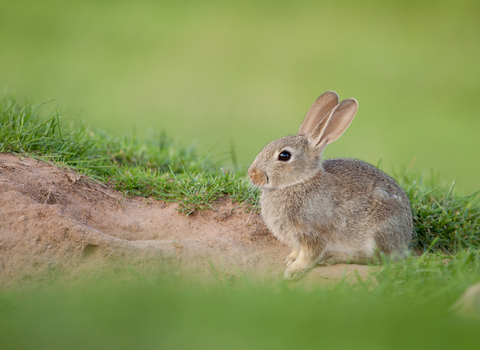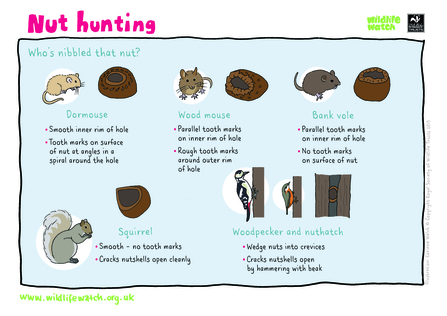
Tom Marshall
Magnificent Mammals
Wild about mammals
Find out how why rabbits have a flashy white tail and such big ears!
This Nature Club session for primary school age children is all about mammals. Find out about the characteristics shared by all mammals, take a closer look at how rabbits are adapted to their environment, and discover how to spot signs of mammals in the wild.
Did you know? The rabbit is native to Spain and was introduced to this country by the Normans in the 12th century to provide food and fur.
Video: Join our education officer Katie at Brandon Marsh Nature Reserve as she shares some fascinating facts about rabbits. Did you know, rabbits can communicate in a variety of ways to warn each other when danger is about? Katie also takes a look around the reserve to see what mammals might be living there. After watching the video, test your knowledge with our quiz, then hop outside to see what you can discover about the mammals living in your local green spaces.
Rabbit quiz!
- What colour are wild rabbits?
- How do they use their white tail?
- Can you name a predator who rabbits have to look out for?
- Why do rabbits have large back feet?
- On their front paws, what do rabbits use their long claws for?
- Rabbits have large eyes located where on their head?
- What does a rabbit use its long whiskers for?
- Rabbits are herbivores with long sharp teeth and aside from eating, why must they gnaw lots of vegetation, including hard things like sticks and bark?
- What can rabbits do with their long ears to help them listen out for predators?
Answers
- All wild rabbits have thick brown fur for camouflage and to keep them warm and dry.
- Their white tail can be used as a warning signal to other rabbits if there is danger.
- Rabbit predators include foxes, stoats and buzzards.
- Large back feet help them to run away from predators and to communicate - thumping their back feet warns other rabbits of danger.
- Their long claws are used for digging burrows. Rabbits live in large groups in underground burrow systems known as warrens.
- Rabbit eyes are on the side of their head so they can see all around them to look out for predators. Hunting animals tend to have forward-facing eyes to target prey.
- Whiskers help rabbits feel their way into small gaps: useful for ensuring a burrow is just right! Not so big a predator can get in, but just wide enough for a rabbit not to get stuck, since if their whiskers fit in a hole, their body will fit too.
- Rabbit teeth never stop growing so they gnaw lots of vegetation to keep them in trim.
- Rabbits can waggle their ears left and right and independently of one another so they can hear predators creeping up on them!

SPOTTING MAMMALS
In the video our education officer Katie went looking for signs of mammals at Brandon Marsh Nature Reserve and spotted lots of evidence for their activities, including tracks, holes and poo! Snow and mud are great for spotting animal tracks and you can find out more by taking a look at our guides for Who's Tracks Can I Spot? and Identifying Animal Prints. We also have a Who's Poo Can I Spot? guide!
Another way to find out what animals have been around is to look for what they've been eating. Did you know that when animals eat nuts they leave tell-tale damage on the shells which identify them as the munching mammal! If you're heading to a local woodland, download our nut spotter sheet below and see what nuts you can find - and work out who's been having a nibble! You may also want to take a look at our other two spotter sheets to find out more about the kinds of mammals, and meat-eating predators, you might come across.
Download a spotter sheet

